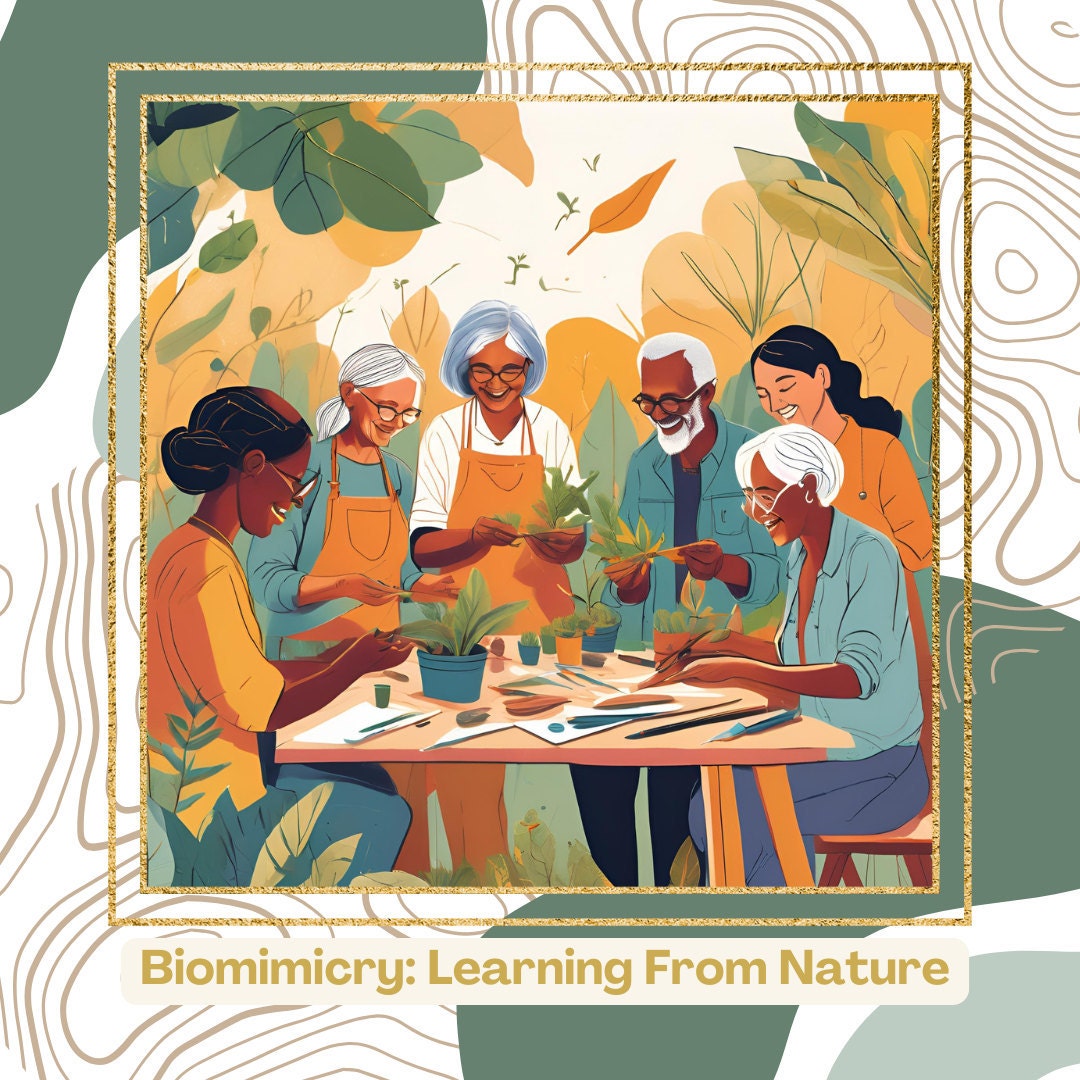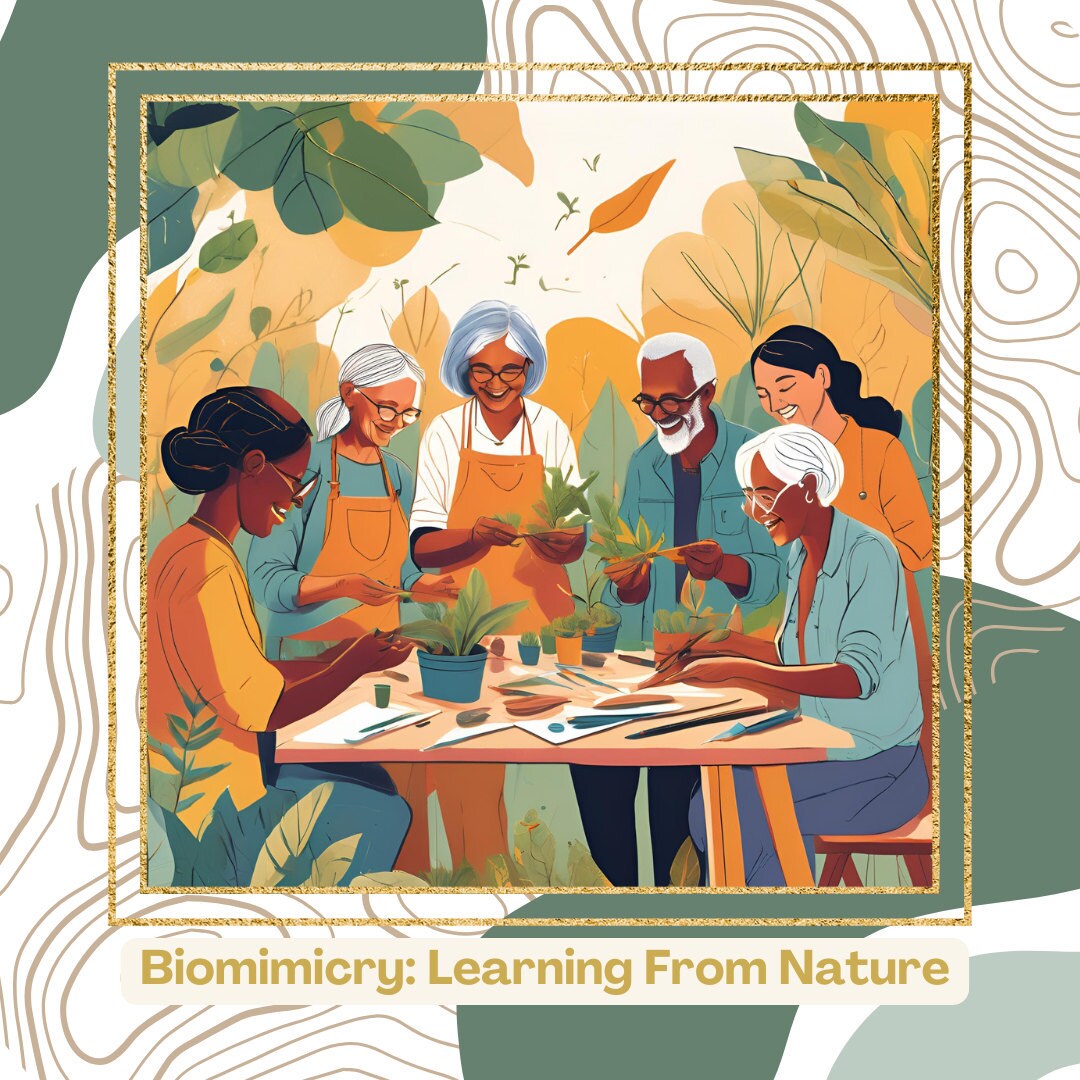
Biomimicry: Learning from Nature to Design a Sustainable Future
Nature is inherently beautiful and possesses the power to heal herself, with or without us. But the idea of healing together, now that is a truly incredible possibility. It is an inspiring new frontier, one that I had the privilege of beginning to explore during my Architecture studies at the University of Colorado, Denver. It grabbed my attention and I wanted to share more about this way of designing and thinking.
I believe that as we heal ourselves, the Earth will begin to heal alongside us. I love to envision a world that is whole and thriving. My thoughts and words carry power, so I strive to use them to inspire both awareness and possibility. Deep in my heart, I trust that our personal healing is intrinsically linked to the healing of our planet. A renewed self-image leads to different choices when we love ourselves, we move through the world with greater intention. By transforming the way we see and value ourselves, we can inspire a collective shift toward seeing nature with the same reverence. As more people embrace this perspective, working in harmony with each other and the Earth, healing becomes not just possible, but inevitable.
Biomimicry is one way of seeing the brilliance of nature and learning from it. Designing thoughtfully, with love and respect. Being a part of the planets beautiful symphony of color, sound, function, uniqueness, and wonders. Using our imagination to co-create from the world's oldest most brilliant species. That which has stood the test of time. Observing and expanding the brilliance of our relationship with nature.
Nature has been designing for billions of years, refining solutions that support life, efficiency, and sustainability. Biomimicry—derived from the Greek words bios (life) and mimesis (imitation)—is the practice of learning from nature’s strategies to solve human challenges. More than just an innovation tool, biomimicry is a philosophy that shifts the way we see the world, urging us to view nature as more than just a resource to be exploited but as a mentor guiding us toward sustainable living.
By studying the principles of biomimicry, designers, architects, engineers, and creatives across industries can develop solutions that align with nature’s time-tested wisdom. Organizations like the Biomimicry Institute and its resource AskNature.org provide insights into how natural systems function, offering a roadmap for designing a more regenerative and harmonious world.
What is Biomimicry?
At its core, biomimicry is about emulating the genius of nature to create systems, products, and processes that are environmentally friendly, efficient, and sustainable. Unlike conventional design approaches that often work against nature—exploiting finite resources and generating waste—biomimicry seeks to create solutions that integrate seamlessly into the natural world.
This approach has already inspired groundbreaking innovations, from self-cleaning surfaces modeled after lotus leaves to energy-efficient buildings designed like termite mounds. By looking to nature as a model, mentor, and measure, biomimicry provides a holistic framework for creating solutions that work in harmony with life rather than disrupting it.
The Three Essential Principles of Biomimicry
Biomimicry is guided by three core principles that shape its application in design and beyond:
1. Nature as Model
Nature serves as a blueprint for problem-solving. Every challenge we face—whether in architecture, fashion, medicine, or energy—has likely been solved in some way by nature.
For example:
• Energy-efficient cooling systems inspired by termite mounds, which regulate internal temperature without the need for air conditioning.
• Water filtration technology modeled after the way coral reefs remove impurities from seawater.
• Self-healing materials designed to mimic the regenerative abilities of human skin or tree bark.
By closely observing how organisms have evolved to thrive in their environments, designers can develop sustainable solutions that require fewer resources and produce less waste.
2. Nature as Mentor
Biomimicry shifts our perspective, encouraging us to see nature not as something to dominate but as a teacher from which we can learn. The natural world operates on circular, closed-loop systems where waste does not exist—everything serves a purpose within the larger ecosystem.
This philosophy encourages industries to move away from linear models of consumption (take, make, waste) and toward regenerative practices. Circular economies, biodegradable materials, and renewable energy sources all stem from a biomimetic understanding of how ecosystems function efficiently.
3. Nature as Measure
Sustainability is not just about minimizing harm; it’s about actively contributing to life. Nature operates within boundaries that support the well-being of all species, and biomimicry uses these benchmarks to evaluate how we design in harmony with the natural world. The key question becomes: Does this innovation create conditions conducive to life?
For instance, materials designed with biomimicry principles should be non-toxic, biodegradable, and energy-efficient. Products should be created with longevity in mind, reducing the need for excessive resource extraction and waste generation.
Biomimicry in Design: Transforming Industries
Biomimicry is already influencing a range of industries, leading to revolutionary developments:
• Architecture & Urban Planning – Buildings inspired by termite mounds (like the Eastgate Centre in Zimbabwe) use natural ventilation to reduce energy consumption.
• Fashion & Textiles – Fabrics modeled after shark skin reduce drag and resist bacteria, while dyes inspired by butterfly wings eliminate the need for toxic pigments.
• Technology & Engineering – Biomimetic adhesives mimic gecko feet, allowing strong, reusable grip without glue.
• Healthcare & Medicine – The study of fireflies has led to brighter LED lighting, while shark skin patterns have inspired antibacterial surfaces in hospitals.
These examples highlight how shifting our mindset to learn from nature can lead to designs that are not only innovative but also restorative and life-supporting.
A Biomimetic Worldview: Changing How We Live
Adopting a biomimetic perspective is more than just a design strategy—it’s a way of seeing the world with greater awareness and respect for life’s interconnectedness. When we look at nature as an intelligent system rather than a resource to exploit, we begin to make more mindful choices in our daily lives:
• We design homes, cities, and transportation systems that work with nature rather than against it.
• We create businesses and economies that mimic the circular efficiency of ecosystems, eliminating waste and pollution.
• We develop products that are regenerative, leaving the planet better than we found it.
Embracing biomimicry means stepping away from extractive mindsets and moving toward coexisting harmoniously with the planet. It invites us to ask: How would nature solve this problem? The answers are all around us, waiting to be rediscovered.
A Future Rooted in Nature’s Wisdom
Biomimicry offers more than inspiration—it provides a tangible, science-backed pathway toward a regenerative and sustainable future. Whether through designing eco-friendly products, rethinking business models, or shifting our personal habits, nature has already laid out the solutions we need.
By embracing biomimicry’s principles—seeing nature as a model, mentor, and measure—we can move toward a world that thrives in balance with life, ensuring that future generations inherit a planet that is not just habitable but truly flourishing.
For more insights into biomimicry and nature’s genius, explore www.asknature.org, a rich resource for biomimetic solutions and inspiration. I will continue to share more as this path of learning and curiosity unfolds.
Would love to hear your thoughts!
- What are your thoughts about this way of viewing nature as a co creative design partner?
- How do you think our personal healing and self-awareness could inspire more sustainable and nature-aligned design choices?
- Can you envision a world where we not only learn from nature but also heal alongside it? Let’s explore the possibilities together!
